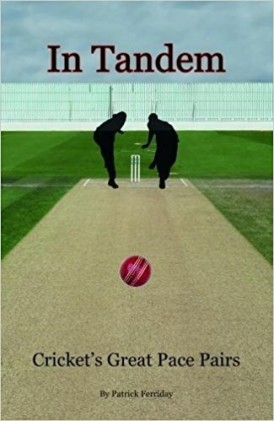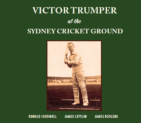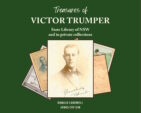In Tandem
Archie Mac |Published: 2017
Pages: 253
Author: Ferriday, Patrick
Publisher: Von Krumm Publishing
Rating: 4 stars

In Tandem, looks at some of the great opening fast bowling pairs in Test cricket history. The criterion for selection is that both partners need to have retired from Test cricket. This meant that a number of modern combinations were not considered, including England pair James Anderson and Stuart Broad.
In the end, author Patrick Ferriday chooses 11 pairs to examine, starting with 1920s – Jack Gregory and Ted McDonald. We learn that before the dominant Australian captain, Warwick Armstrong opened his attack with these two speedsters; the accepted practice was to start a match with one fast and one slow bowler.
It did not take long for Armstrong’s tactics to become the accepted method and Ferriday takes us through all the great fast bowling partnerships that followed. His style is factual and he concentrates on the cricket rather than external factors. This scholarly approach works well and the author does a fine job in intertwining the career stories of both opening partners.
Each pair has approximately 20 pages dedicated to their deeds and all chapters begin with a photo of each bowler in action. Under the full page photo is a summary of their style supplied by a variety of writers. The author has obviously trawled through countless publications to find the most apt description for each practitioner and all are evocatively written. The two I found the most thought provoking were Alan Ross on Charlie Griffith and Rodney Ulyate on Shaun Pollock.
These descriptions really set the scene of what it was like to watch these great bowlers in action. To Ferriday’s credit he does not simply provide a pen pal type sketch of each player. Instead he expertly dissects what makes them great bowlers and how they performed and complimented one another.
The biggest shock was that the majority of the bowlers discussed actually performed better when not paired together. This is borne out by a brief statistical section (just a couple of pages) at the end of each chapter and flies in the face of all considered cricketing opinion. This discovery will be as significant for the cricket historian, as learning the world was round for cartographers.
In Tandem, is a real cricket book. It provides thought provoking analysis on both the subjects discussed, as well as the impact of the cricketing laws they played under and society’s expectations of acceptable behaviour. For instance would the intimidating Thomson and Lillee have been cheered to the chorus by 1930s fans as they were by 1970s crowds? Or would Wasim and Waqar have devastated world cricket without the Pakistan discovery of reverse swing?
Ferriday is also prepared to tackle all issues, including whether Wasim Akram was on ‘the take’. Or whether the West Indies would have won in England if Charlie Griffith, as many thought he should have been, was called for chucking.
The author deserves to be successful with this fine book. I am sure he will be, and I am hopeful that success will encourage him to write a similar book on the slow men partnerships in Test cricket. Who knows what fascinating insights he will uncover to add to our cricketing knowledge.






Leave a comment